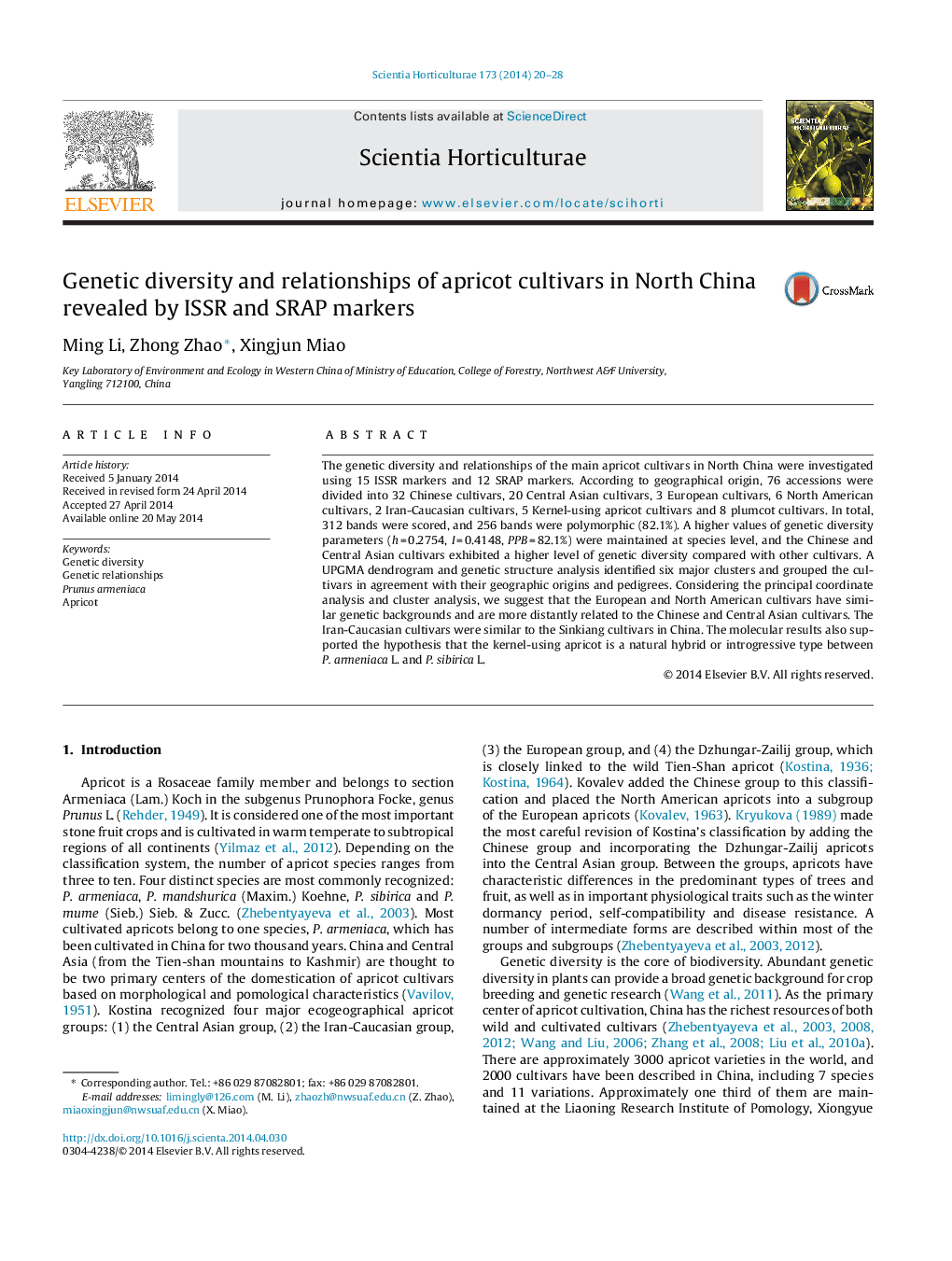| Article ID | Journal | Published Year | Pages | File Type |
|---|---|---|---|---|
| 4566792 | Scientia Horticulturae | 2014 | 9 Pages |
•Apricot cultivars in North China maintained a high level of genetic diversity.•Chinese and Central Asian cultivars exhibited higher diversity parameters.•Cultivars grouped in agreement with their geographic origins and pedigrees.•Kernel-using apricot is a natural hybrid type of P. armeniaca and P. sibirica.
The genetic diversity and relationships of the main apricot cultivars in North China were investigated using 15 ISSR markers and 12 SRAP markers. According to geographical origin, 76 accessions were divided into 32 Chinese cultivars, 20 Central Asian cultivars, 3 European cultivars, 6 North American cultivars, 2 Iran-Caucasian cultivars, 5 Kernel-using apricot cultivars and 8 plumcot cultivars. In total, 312 bands were scored, and 256 bands were polymorphic (82.1%). A higher values of genetic diversity parameters (h = 0.2754, I = 0.4148, PPB = 82.1%) were maintained at species level, and the Chinese and Central Asian cultivars exhibited a higher level of genetic diversity compared with other cultivars. A UPGMA dendrogram and genetic structure analysis identified six major clusters and grouped the cultivars in agreement with their geographic origins and pedigrees. Considering the principal coordinate analysis and cluster analysis, we suggest that the European and North American cultivars have similar genetic backgrounds and are more distantly related to the Chinese and Central Asian cultivars. The Iran-Caucasian cultivars were similar to the Sinkiang cultivars in China. The molecular results also supported the hypothesis that the kernel-using apricot is a natural hybrid or introgressive type between P. armeniaca L. and P. sibirica L.
